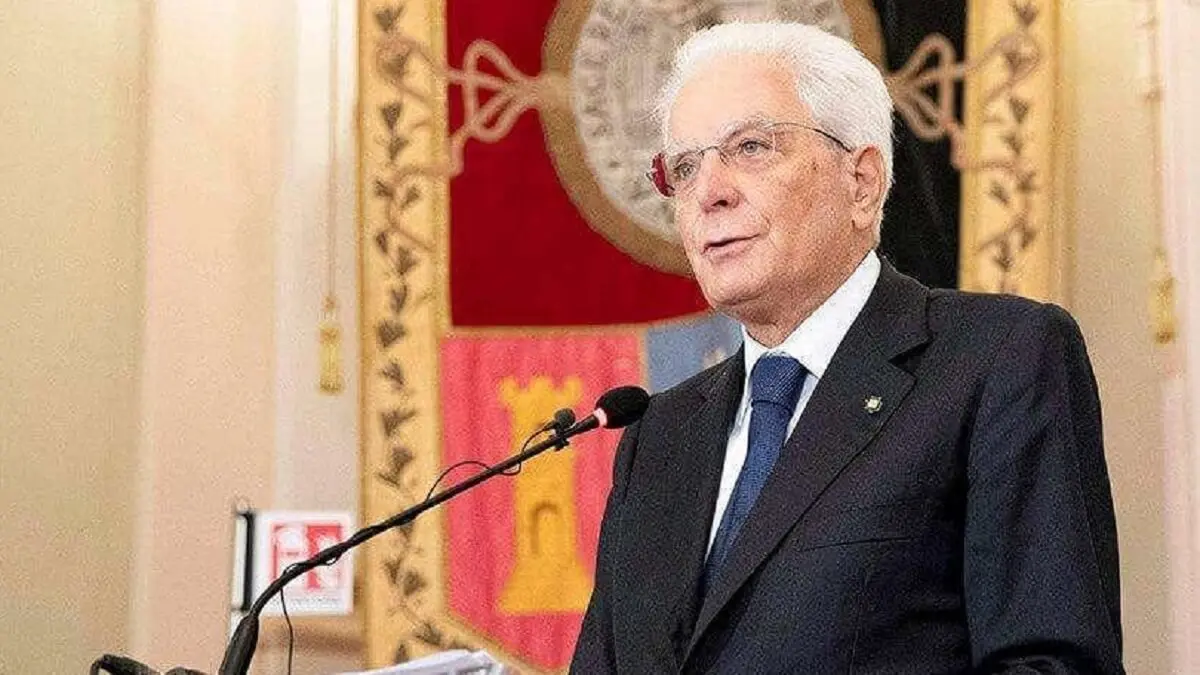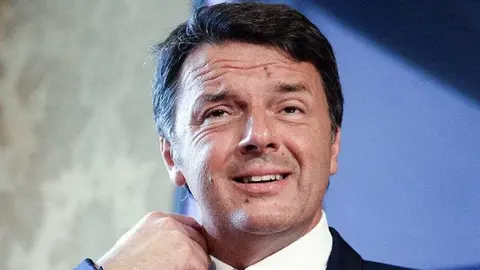Sergio Mattarella becomes the longest-serving president of republican Italy

A new development in transalpine politics this October has been the fact that Sergio Mattarella, president of the Italian Republic since 3 February 2015, has become the longest-serving head of state since the Italian Republic was founded back in June 1946: eight years and nine months at the head of the Quirinal Palace, surpassing the previous record of the recently deceased ex-president Napolitano (eight years and eight months between 2006 and 2014).
And the truth is that Mattarella, who has a mandate until February 2029, has achieved this "record" at a time of peak popularity. A popularity that can be explained in terms of his numerous successes in the performance of his duties as head of state.
In fact, it should come as no surprise that Mattarella is considered by some (such as the prestigious journalist Bruno Vespa) to be the best president the Italian Republic has ever had. Born in Palermo (Sicily) on 23 July 1941, Mattarella is the son of Bernardo Mattarella, a five-time minister in Christian Democratic (DC) governments throughout the 1950s. Being the son of one of Sicily's leading Christian Democrat politicians gave him the chance to meet the greatest "exponents" of this historic party: Alcide de Gasperi, Amintore Fanfani and Aldo Moro. He also got to know first-hand the famous judges murdered by the Mafia, Giovanni Falcone and Paolo Borsellino, and many others.
Mattarella, the younger of two brothers, did not originally intend to go into politics. A graduate in law from the University of La Sapienza (Rome, 1964), for almost two decades he taught at the University of his native Palermo, focusing his university work on parliamentary law.
But his life changed completely on 6 January 1980. On that day his brother Piersanti, then governor of the Sicilian Region, was assassinated by "Cosa Nostra" as he was on his way to Mass to celebrate the Epiphany of the Lord. His brother Sergio was the first to come to his rescue, but to no avail: Piersanti died practically on the spot, abruptly ending what was expected to be a brilliant political career.
Sergio, who was very close to his elder brother, decided to take up the baton and, in the next general election, held in 1983, he won a seat for the DC in the lower house. In the 1983-87 legislature, the main protagonist was Bettino Craxi, president of the Council of Ministers in two consecutive governments thanks to the support of the main party in the parliamentary arc, which was none other than the DC.
When, after the 1987 elections, the DC decided to regain control of the Council of Ministers, Mattarella became much more important. In July 1987 he became Minister for Relations with Parliament, a post he held until July 1989; from there he moved to Public Instruction, where he remained until July 1990.
Despite "Tangentopoli" and the subsequent judicial operation known as "Mani Pulite", which began in February 1992, and the dissolution of the Christian Democrats (DC) over corruption in January 1993, Mattarella remained in politics, reaching his peak in the 1996-2001 legislature: between October 1998 and December 1999 he was vice-president of the Council of Ministers. He remained a member of parliament until the 2008 elections, becoming a member of the Democratic Party (PD), which was founded in October 2007 and currently represents the majority of the centre-left.
After new elections in 2008, Mattarella decided to leave politics, unaware that he still had the most important thing to do. Indeed, on 11 October 2011 he was appointed to the Constitutional Court, where he stayed until 29 January 2015, when the members of the electoral body decided that he would become the new president of the Republic, with 646 votes out of 1,007: it was Matteo Renzi, then president of the Council of Ministers, who pushed his candidacy, unaware that he was appointing as head of state someone of both character and extraordinary ability to manage the political class. It was not for nothing that he had been dealing with politicians at the highest level since his childhood, and all that accumulated knowledge he would put into practice in later years.
The first years of Mattarella's presidency (basically, the years 2015, 2016, 2017 and the first half of 2018) were very easy for the Sicilian politician and jurist. He only had to appoint one government, the one headed by the Roman Paolo Gentiloni (12 December 2016), after Matteo Renzi lost the constitutional "referendum": with a majority inherited from the Tuscan politician, Gentiloni, who had already been Minister of Communications (2006-08) and Minister of Foreign Affairs (2014-16), had no choice but to continue with the management started by Renzi in February 2014.
The difficulties came after the general elections of March 2018: the centre-right won with 37% of the vote, three points behind the "maggioranza"; but the real winner was the Five Star Movement, an "anti-politics" party that won 32.6% of the vote.
The formation of the first executive of the legislature became particularly tricky, especially because Renzi, who still controlled the PD's parliamentary groups, did not want a pact with the 'pentastellini' at all, which meant that it took up to three full months to forge a 'maggioranza' (March, April and May 2018).
In the end, the Cinque Stelle pact was not with the PD, but with Salvini's Lega, which ensured conflict with the EU authorities. Salvini, a politician from Lombardy who had begun his career back in 1993 (when he was only 20 years old), was a well-known anti-European, which is why he quickly clashed with the then president of the Commission, Luxembourg's Jean-Claude Juncker, over the State Budget for 2019. Mattarella had a hard time with Salvini, who wanted the Economy and Finance portfolio to go to a well-known enemy of the single currency (Paolo Savona), and imposed on him that this ministry be headed by an orthodox economist who taught at the University of Tor Vergata and whose name was Giovanni Tria.
In August 2019, Salvini decided to bring down the government of which he was deputy prime minister in order to try to go to early elections that he would most likely have won, but here he ran into Mattarella again: aware that the different sectors of the PD, at odds with each other for years, could ally to avoid elections that would have been a real debacle for the centre-left, the President of the Republic managed to forge a second "maggioranza" between PD and Cinque Stelle, sending Salvini to the opposition. In reality, it was a four-way coalition, including the party recently founded by Matteo Renzi (Italia Viva) and the PD's left-wing current called Free and Equal (LeU). A coalition that would give the possibility of keeping the legislature alive until at least the end of 2020 or the beginning of 2021.
In January 2021 came the third jolt of the legislature and the third occasion for Mattarella to put his skill back into play. Now it was Matteo Renzi who was bringing down the government, and that was the moment he chose to call in Mario Draghi, former president of the European Central Bank (ECB) and a figure of the highest prestige, and offer him to lead a government of independents, the third after the one headed by Ciampi (1993-94) and Monti (2011-13). Draghi accepted and, with Mattarella's "approval", led a new "maggioranza" that included all the major parties except the Brothers of Italy of the Roman Meloni. The government, born on 13 February 2021, was a complete success and achieved growth rates not seen since the 1980s, until it finally collapsed in July 2022.
The legislature, although it did not reach the five years envisaged in the Constitution, reached four and a half years of life thanks to the ability of the Sicilian Mattarella, a man seasoned in a thousand battles and with a unique talent for managing the different political parties. By that time he had been re-elected President of the Republic (January 2022), given the inability of the political parties to reach an agreed name to replace him. He received more than 750 votes, falling less than 100 short of the number achieved by Sandro Pertini in 1978, the most voted president in republican history.
When new elections were held in September 2022, and with the centre-right now winning with an overwhelming majority, Mattarella was able to overcome the distrust of the Roman Meloni, whose party had been the most voted for, and gave him his full support for the formation of the government on the condition that Salvini could not return to the Interior (he would end up being appointed deputy prime minister and head of Infrastructure) and that Antonio Tajani, former president of the European Parliament, would lead the transalpine diplomacy. The Meloni government became a reality on 22 October of that year, and Mattarella had the honour of being the first president to appoint a woman as president of the Council of Ministers after 32 consecutive men.
Since then, Mattarella, who turned 82 last July, has continued to perform his presidential duties while continuing to win the affection of a country that is fed up with its political class, but which knows that it has in this veteran Christian Democrat a figure of maximum guarantees. As a result, he is already the longest-serving president in the history of the Italian Republic and there is no end in sight to his second term, given that he is in very good health and is known for his enormous personal and institutional austerity. Sergio Mattarella has been, and is being, the best head of state at a time of gradual decomposition of national politics.
Pablo Martín de Santa Olalla Saludes is a lecturer at Camilo José Cela University and author of the book "Italia, 2018-2023.De la esperanza a la desafección" (Liber Factory, 2023).



